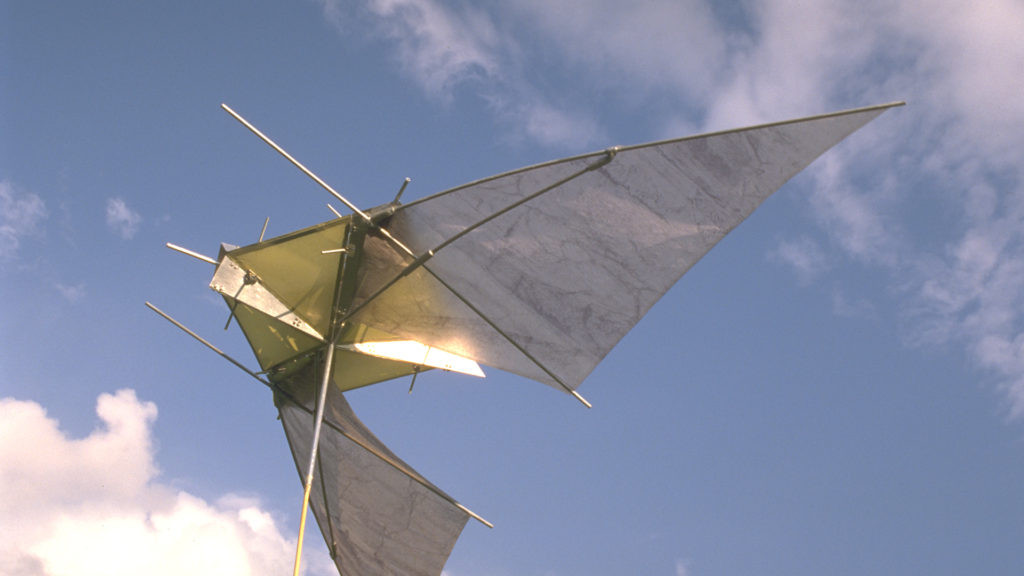
___ The flarke project is an architectural confrontation with the tree-house and the cave. Its spatial interaction is manifested by motion. ___ The Flarke is installed on a cliff. When the wind rises, the wings are extended and the Flarke rises into the air. At the same time, the Mun-dase withdraws into the rock. People within the rooms are able to change the structure and location by a shift of the balance. ___ The geometrical structure of the Flarke consists of two superimposed pyramids, whose edges are opened by two triangular surfaces, permitting them to move. The spatial envelope is run with sliding bearings (Mursen) along a cross (Krixe). The Krixe is so connected with the construction found on the rock and the Mundase, that it permits movement in all directions by means of a parallelogram system with cardan joints, so that the Flarke always remains in the vertical. The wind is the driver of the motion, it lifts the kite construction into the air and the space is changed due to the angle of incidence to the wind. ___ The Mundase consists of triangular surfaces, arranged in such a manner, that they withdraw into the cave, when the Flarke rises up. Different wind directions and positions of the Flarke have an effect on the form of the Mundase.
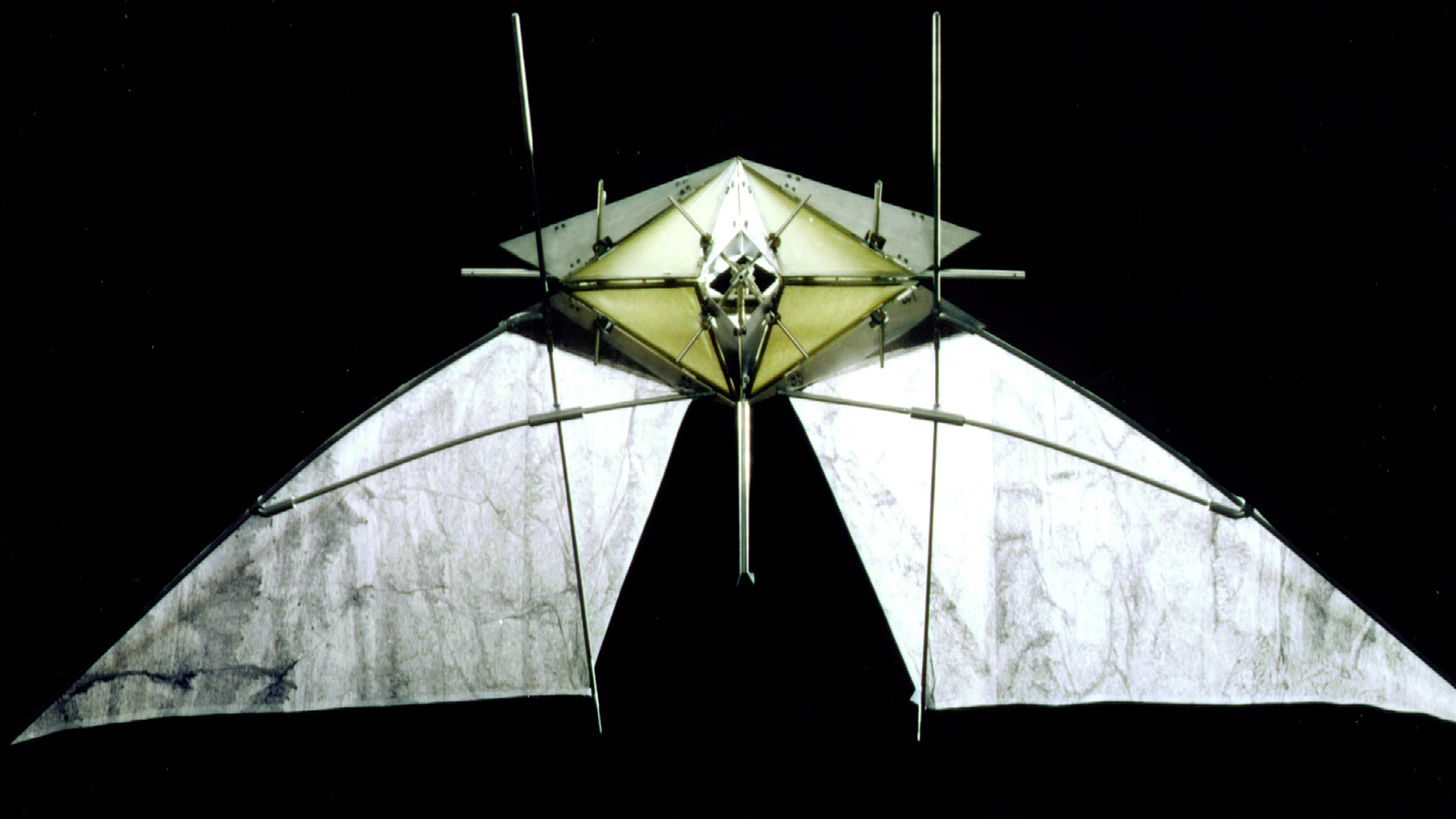
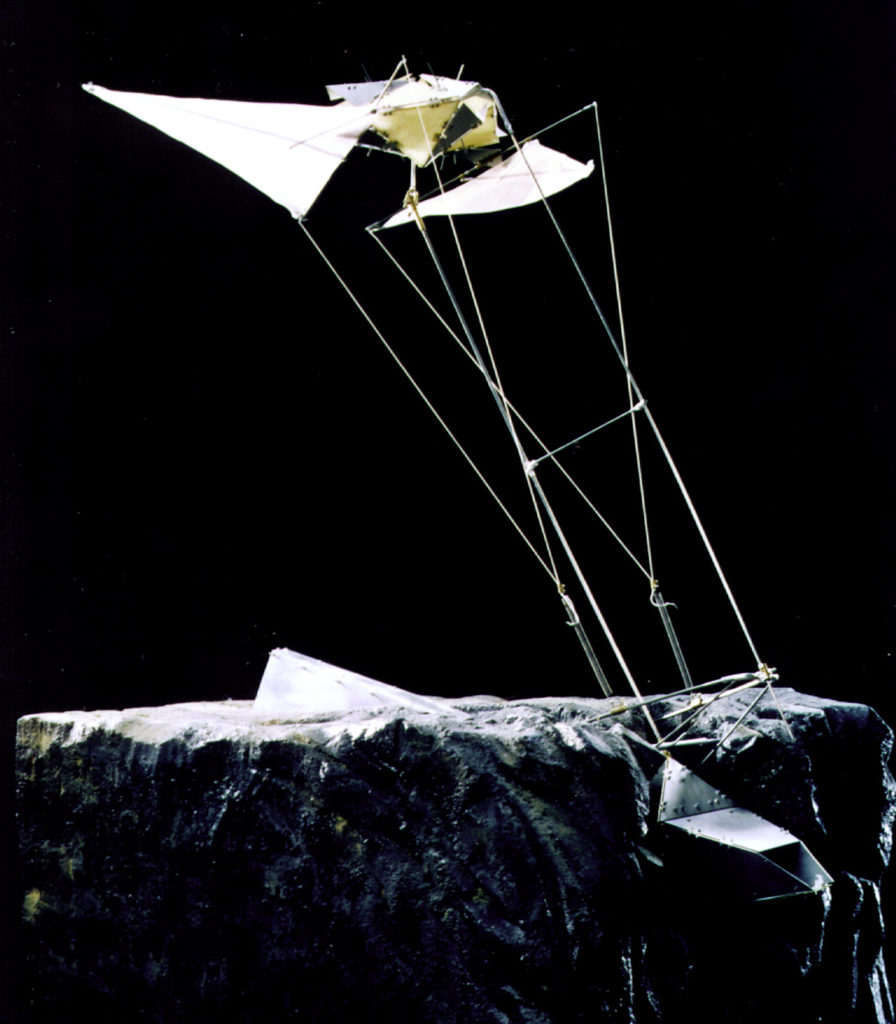
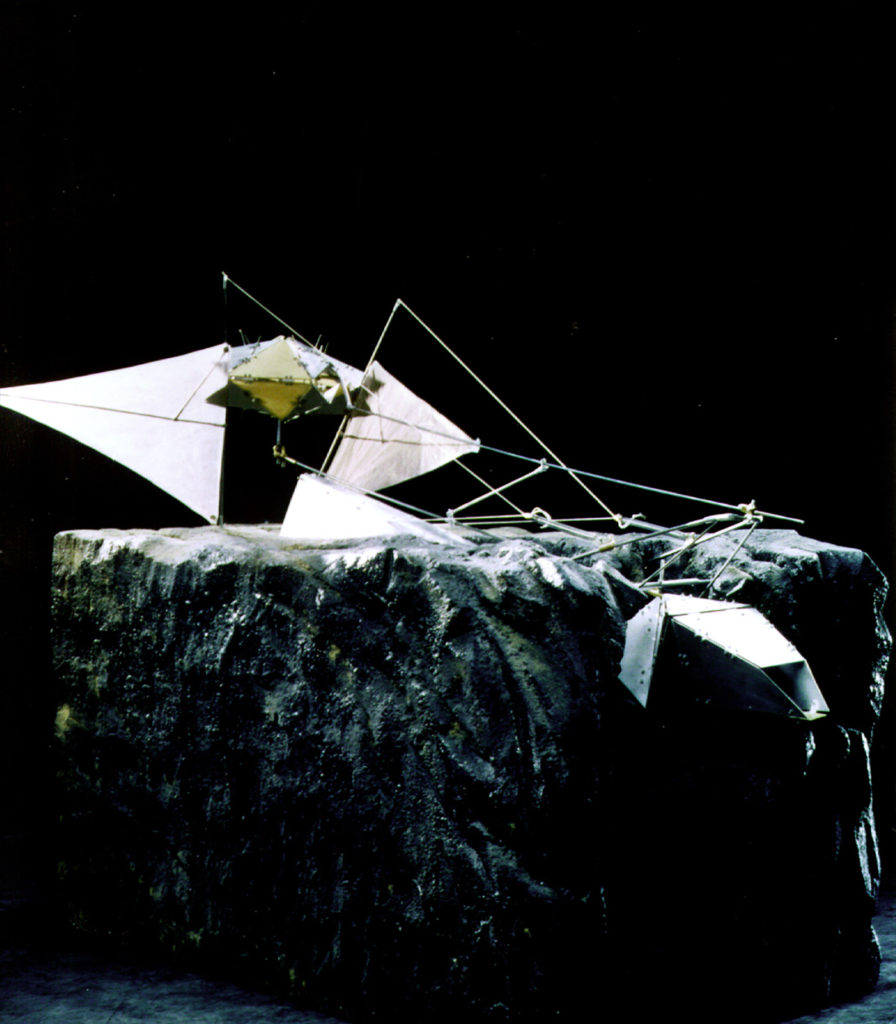

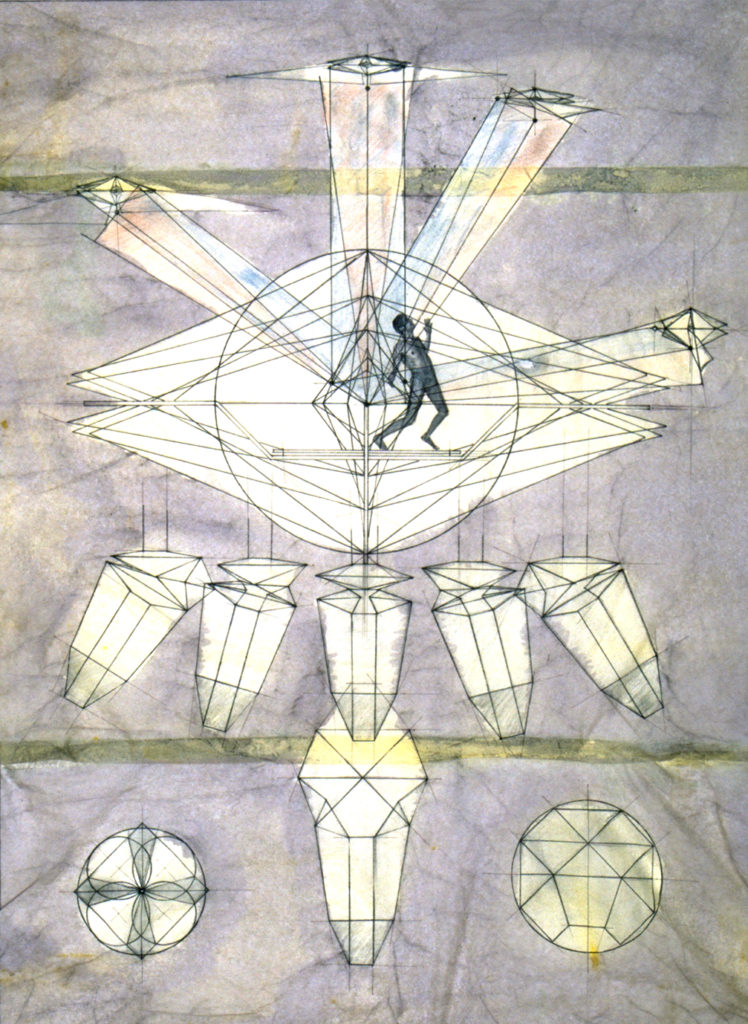

© Najjar Najjar Architects. All rights reserved.

